The staff and residents at Gateway Residential Care Facility in Prince George and Vanderhoof’s Stuart Nechako Manor have something good growing.
Topsoil (background)
In 2020, after the start of BC’s COVID-19 pandemic response, and later in 2021 after an atmospheric river caused much flooding, affecting the province’s transportation infrastructure, food supply chains in BC took a major hit. Food scarcity was a real potential in parts of the province, especially in Northern communities which relied heavily on southern transportation infrastructure. The result was reduced selection on local grocery store shelves and in limited access to approved foods for NH hospitals and long-term care facilities. Due in part to this limited access, a group comprised of NH dietitians, environmental health, risk management, and population and public health employees planted the seeds for a solution.
Seedlings
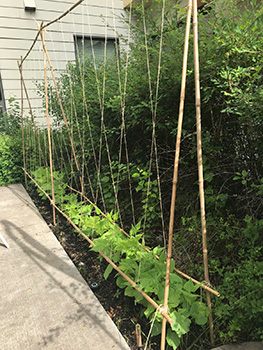
Enter the On-site Gardens and Produce for Patient/Resident Consumption Policy (that’s a mouth full), a resident-driven co-designed gardening program that sets the table for residents at long term care facilities to grow their own food and eat it too!
The policy was put into place to bridge the gap between the garden beds that already existed outside some long-term care facilities and the kitchens inside. It also focused on the positive mental health impacts of being outdoors, being physically active, and pride would have on the residents.
The strategy was spearheaded by Erin Branco, Clinical Dietitian at Gateway Residential Care Facility in Prince George, where the policy was trialed, and by Robyn Turner, Clinical Dietitian at the Vanderhoof Health Unit.
“In 2019 [NH] partnered with Dr. Shannon Freeman, Associate Professor in the School of Nursing, at UNBC and a couple of her Master students to do our research project on gardening in long term care,” says Erin, as she describes some of the groundwork that helped this policy come to life. “We had some grant money to create or improve one of our spaces with some raised beds to plant some vegetables in one of the garden spaces here at Gateway in Prince George, and that was successful. All the residents loved doing that. But the question remained, why can’t we use this food in the kitchen, eat it and share it with other people? We were never able to do that because there was no NH policy or process in place.”
And then the effects 2020 and 2021 hit…
“The fires in Lytton impacted all the railways, and the atmospheric river destroyed all those highways, it just made a lot of delays and a lot of frustrations,” says Robyn, detailing some of the struggles she and the staff in Vanderhoof faced. “We were constantly having to change the menu. There was a lot of shortages, the items being served to patients was…you never knew what was really going to show up. And then with the everyone feeling the supply chain issues. Then support of management said ‘let's do this. Let's make this happen.’”
Grow your greens and eat them too
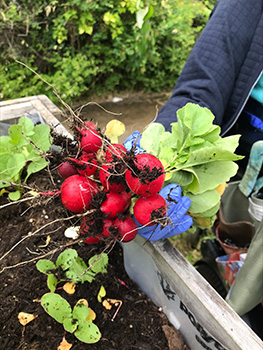
In 2022, Gateway Lodge was one of four sites greenlit to pilot this new process of serving home grown or locally grown foods to residents through NH kitchens - Stuart Lake Hospital in Fort St. James, St. John Hospital & Nechako Manor in Vanderhoof, and Rotary Manor in Dawson Creek rounded out the list - and the results were beyond encouraging.
The growing season was embraced by enthusiastic residents and staff.
“One thing that I hear often from residents to is just a desire to have more fresh food,” says Erin, “The residents have a lot of pride around being able to grow things and then share it with the other residents as well.”
Across the board the results of the trials were positive.
“It wasn’t just the residents who were excited about this,” says Robyn. “The food service staff were excited, and they also took a little bit of ownership in growing a little bit…The nurses are also excited because they care about the food that the patients are eating and they have that connection, they want to see them eating the fresh food too. They're all very excited, and they're always going to be wanting more.”
One major positive outcome from the project was the effect it had on the residents.
“It’s important for the residents to have a meaningful activity to help with their mood and their purpose in long term care,” Erin says. “Translation of knowledge is huge, and we learn so much from the residents and they help they help pick what seeds we are going to be growing. They help decide when to transplant the seedlings into bigger pots and you know where to put things, what plants to plant together.”
As a result, the garden program was expanded, as there was a deep desire from the residents to be involved and to create a beautiful space to enjoy the bounty of fresh produce. The residents were proud of what they helped accomplished. They want to expand what can be offered through the garden including traditional and indigenous fruits and vegetables.
It's not all rose hips / Stick in the mud
Despite all the positives of the program, Erin notes a few drawbacks that hindered the garden’s potential through last summer: the amount of food that needs to be grown to continually feed residents, and the time it takes to continually manage the gardens.
“Gateway is big, we have 120 residents in complex care and assisted living also accesses the space, so there’s a lot of people, and unfortunately, what we did grow gets diluted very quickly,” says Erin. “There's just so many people to feed. Robin had some great champions outside of herself that really helped with their garden. Here at Gateway, it’s been more challenging. So, we've identified that we do need other champions to help, external help that can support the garden and can make sure that we're planting things, we're doing things when we're supposed to be and doing more consistent checks on the gardens and having more consistent engagement with residents as well.”
Grow more!
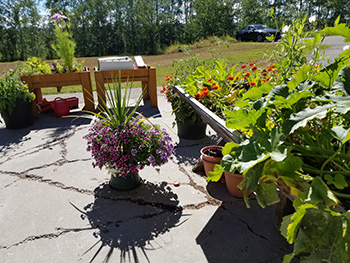
Now that a proper policy is in place, and after the success of last year's trial, both Erin and Robyn hope that other NH facilities, and plans for future facilities, take the opportunity to design and develop gardens or build green houses on their grounds.
“I think it's a good opportunity that will stretch in different areas,” says Erin. “We'll have to just share it with [other facilities]. They have to know about the policy.”
“I think there are more garden sites and various garden type programs throughout the North,” adds Robyn. “It's just how much capacity the rec team has. But the policy is there for if they choose to use it. That's the intention of the policy, to keep growing.”
Volunteer opportunities
Garden programs at all four trial locations ran through this spring and summer. If you are looking for volunteer opportunities, this is a fantastic opportunity to give back in your community.
“This year we are trying to expand the garden a little bit,” Erin notes. “Hopefully the volunteers will be able to help make sure that our harvest is better, and yields are larger.”
“Volunteers, but also family members visiting these sites, they're more than welcome to take their loved one and go and water or weed,” adds Robyn.
Speak with your local long term care facility, or care facility, to see if they are in need aware of the policy and if you’re able to lend a hand through the summer months.

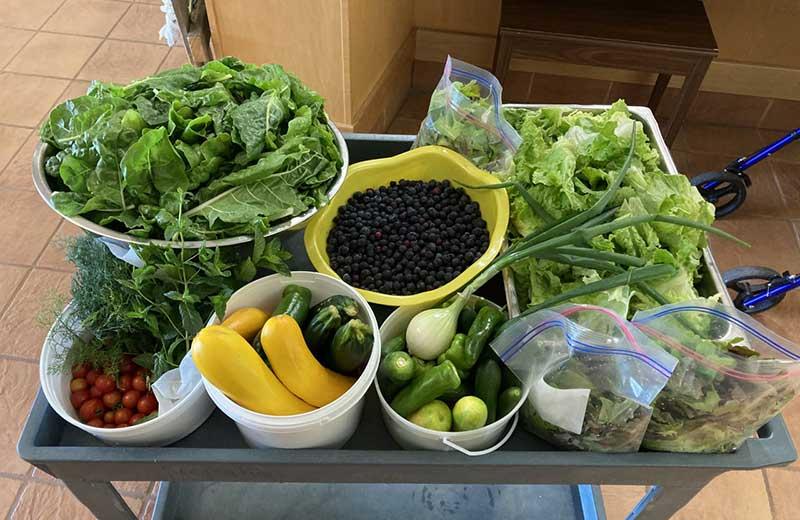

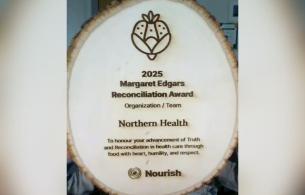










Comments